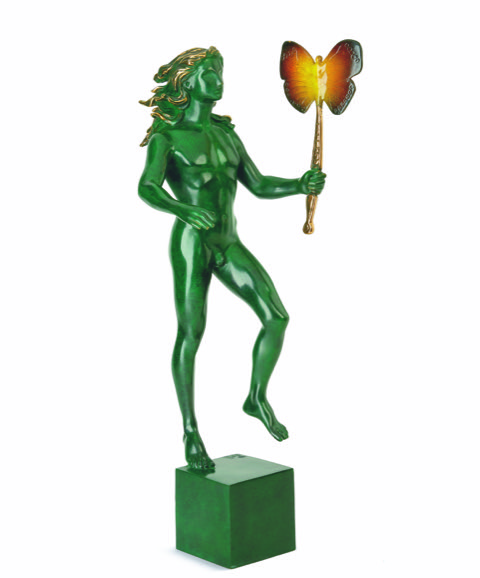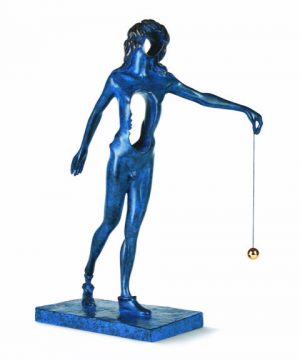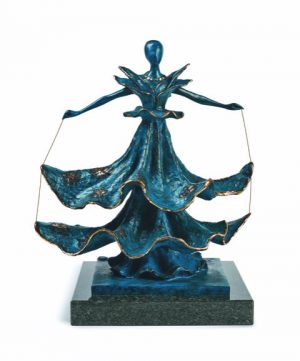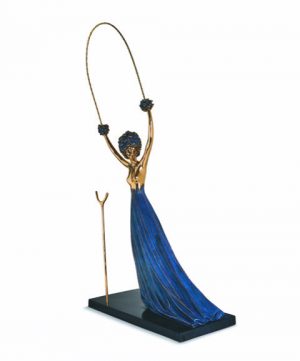This image originates from Dalí’s famous Tarot series, which was created specifically for his wife and muse Gala, who nurtured Dalí’s interest in mysticism. The image, chosen to depict the “Devil” card, illustrates a figure falling towards the unknown, holding aloft a butterfly.
Dalí wished to see his two-dimensional artwork transformed into three-dimensions; here
the classical male figure is sculpted with immense detail, emblematic of the era of the Renaissance masters, whom Dalí was influenced by, specifically Leonardo da Vinci. The sculpture suggests harmony, perfection, his flowing hair in the wake of his movement portrays an image of “beauty”.
Dalí’s symbolism we see here is the butterfly. The butterfly represents metamorphosis and transformation, themes that particularly interested Dalí, together with immortality and incarnation. It is held aloft, seeming to represent the liberated spirit and progress to a higher awareness. In mythology, the butterfly represents the immortal soul; Dalí was on a quest for transcendence through his art.
The sculpture Man with Butterfly leaves the banality of the everyday grounded world in a celebration of life force, in which the man and the butterfly symbolize the duality of body and spirit.
Date: conceived in 1968, first cast in 1984
Material: bronze
Technique: lost wax process
Edition size : 350 + 35 EA
Edition : patina green
Height : 55,5 cm
Maquette: original gouache, Man with Butterfly, 1968
Direct intervention (created by Dalí): the idea, image, and original maquette
Indirect intervention (created by artisans): lost wax process and patina






